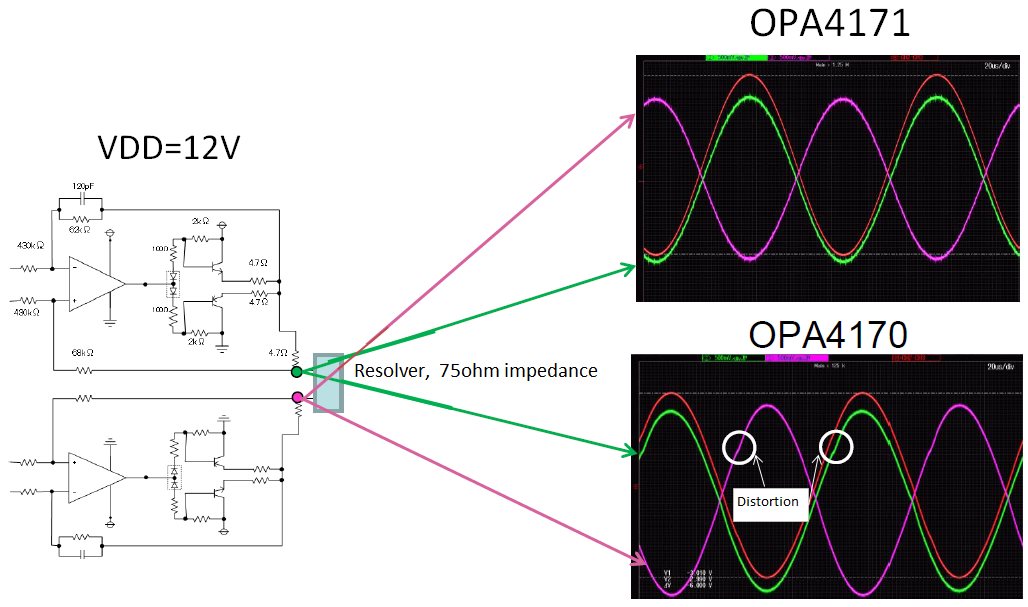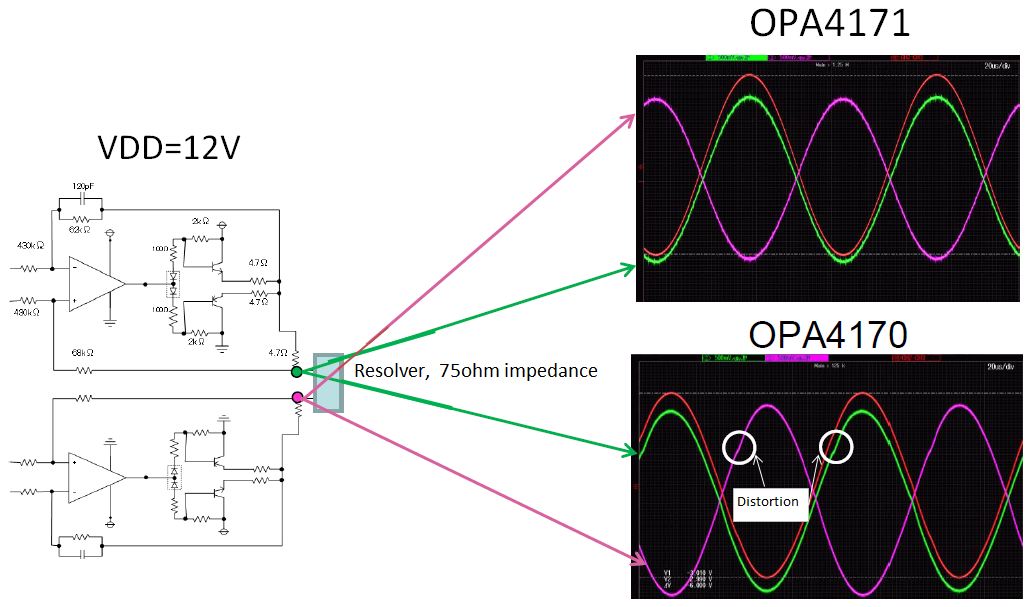Other Parts Discussed in Thread: OPA4170, OPA4171
Hi champs,
My customer evaluated OPA4170 and OPA4171 with attached circutry.
As shown in attached file, when OPA4710 was applied, output sinsoidale waveform shows distortion, but OPA4171 works better.
Could you explain from design point of view, waht is major difference between OPA4170 and OPA4171?
Best regards,



